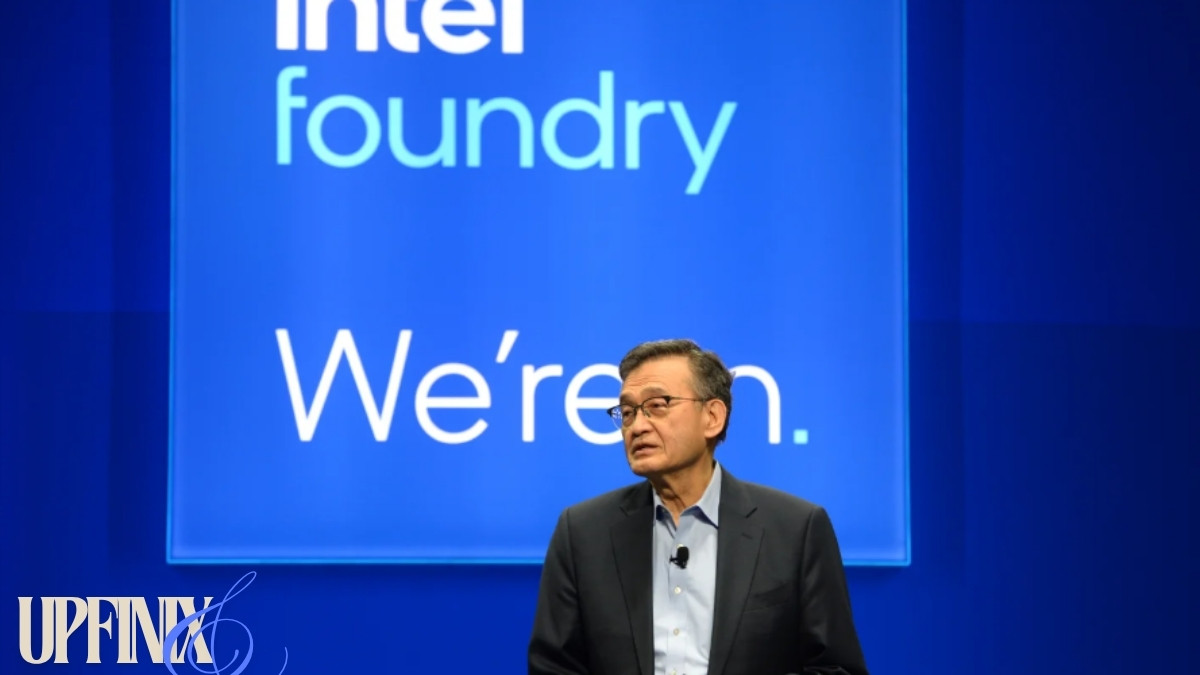The world of crypto is evolving at lightning speed, transforming how we think about money, investments, and technology. Whether you’re a curious beginner or a seasoned investor, the cryptocurrency landscape in 2025 offers both opportunities and challenges. With decentralized finance (DeFi), non-fungible tokens (NFTs), and blockchain innovations shaping the future, staying informed is crucial. This article dives deep into the essentials of cryptocurrency, its trends, risks, and opportunities, providing you with actionable insights to navigate this dynamic space confidently.
From understanding Bitcoin and Ethereum to exploring emerging altcoins and regulatory shifts, this guide is your one-stop resource for mastering crypto in 2025. Let’s explore how you can leverage this revolutionary technology while avoiding common pitfalls.
Table of Contents
What is Cryptocurrency and Why Does It Matter?
Cryptocurrency is a digital or virtual currency secured by cryptography, operating on decentralized networks like blockchain. Unlike traditional fiat currencies, crypto isn’t controlled by governments or banks, offering users greater autonomy and transparency.
Why Crypto Matters in 2025
- Financial Freedom: Crypto empowers individuals to bypass intermediaries like banks, enabling peer-to-peer transactions globally.
- Innovation Hub: Blockchain technology underpins DeFi, NFTs, and smart contracts, driving innovation across industries.
- Investment Potential: With Bitcoin reaching new highs and altcoins like Solana gaining traction, crypto offers diverse investment opportunities.
- Global Adoption: From El Salvador adopting Bitcoin as legal tender to corporations like Tesla holding crypto, mainstream acceptance is growing.
Real-World Example: In 2021, El Salvador became the first country to adopt Bitcoin as legal tender, boosting financial inclusion for its unbanked population. By 2025, more nations are exploring similar moves, signaling a shift toward crypto-driven economies.
Key Trends Shaping Crypto in 2025
The Rise of Decentralized Finance (DeFi)
DeFi platforms, built on blockchains like Ethereum and Binance Smart Chain, are revolutionizing traditional finance. These platforms offer lending, borrowing, and trading without intermediaries.
- Why It Matters: DeFi protocols like Aave and Uniswap provide high yields and accessibility, attracting millions of users.
- 2025 Outlook: Enhanced scalability and user-friendly interfaces are driving DeFi adoption, with platforms integrating AI for smarter investment strategies.
Case Study: In 2024, Aave’s lending protocol processed over $20 billion in transactions, showcasing DeFi’s growing reliability.
NFTs Evolving Beyond Digital Art
Non-fungible tokens (NFTs) have moved beyond collectibles to real-world applications like digital identity, gaming, and real estate.
- Key Developments: NFTs are now used for tokenized property ownership and in-game assets in metaverse projects like Decentraland.
- 2025 Trend: Cross-chain NFT marketplaces are making assets more interoperable, increasing their utility.
Visual Cue: Include an infographic showing the evolution of NFTs from art to real-world use cases.
Read More: – Understanding the United States Space Force: A Comprehensive Guide
Regulatory Shifts and Compliance
Global regulators are tightening oversight on crypto, balancing innovation with consumer protection.
- Key Changes: The EU’s MiCA regulation and the U.S.’s proposed crypto tax laws aim to standardize markets.
- Impact: Clear regulations could boost institutional investment but may challenge smaller projects.
How to Get Started with Crypto in 2025
Choosing a Crypto Wallet
A secure wallet is essential for storing your cryptocurrency. Options include:
- Hot Wallets: Software-based, like MetaMask, ideal for frequent transactions.
- Cold Wallets: Hardware-based, like Ledger Nano X, for long-term storage.
Hot vs. Cold Wallets
| Feature | Hot Wallet | Cold Wallet |
|---|---|---|
| Accessibility | High (online) | Low (offline) |
| Security | Moderate | High |
| Cost | Free or low-cost | $50–$200 |
| Best For | Active trading | Long-term holding |
Selecting a Crypto Exchange
Exchanges like Coinbase, Binance, and Kraken are gateways to buying and selling crypto.
- Tips for Choosing:
- Check for regulatory compliance.
- Compare fees (trading, withdrawal).
- Ensure strong security features like 2FA.
Diversifying Your Crypto Portfolio
Avoid putting all your funds into one coin. Consider:
- Bitcoin (BTC): The gold standard, stable but slower growth.
- Ethereum (ETH): Powers DeFi and NFTs, with strong fundamentals.
- Altcoins: Emerging coins like Cardano or Polkadot offer high-risk, high-reward opportunities.
Visual Cue: A pie chart showing a balanced crypto portfolio (e.g., 50% BTC, 30% ETH, 20% altcoins).
Risks and Challenges in Crypto
Volatility and Market Risks
Crypto prices can swing dramatically. For example, Bitcoin dropped 30% in a single week in 2022 but later hit new highs in 2024.
- Mitigation: Use dollar-cost averaging (DCA) to spread investments over time.
- Tip: Only invest what you can afford to lose.
Security Threats
Hacks and scams remain prevalent. In 2023, over $3 billion was lost to crypto scams.
- Best Practices:
- Use reputable exchanges and wallets.
- Enable multi-factor authentication.
- Beware of phishing emails and fake NFT drops.
Regulatory Uncertainty
Varying global regulations can impact crypto operations. For instance, China’s 2021 ban on crypto trading disrupted markets.
- Stay Informed: Follow trusted sources like CoinDesk or CoinTelegraph for updates.
What’s New in Crypto for 2025?

Layer-2 Scaling Solutions
Ethereum’s layer-2 solutions, like Arbitrum and Optimism, are reducing transaction costs and improving speed.
- Impact: Lower fees make DeFi and NFT transactions more accessible.
- Example: Arbitrum processed 10 million transactions in Q1 2025, a 200% increase from 2024.
Also Read: – Microsoft Layoffs Games Cancelled: What It Means for Xbox in 2025
Central Bank Digital Currencies (CBDCs)
Over 100 countries are exploring CBDCs, blending crypto technology with fiat stability.
- 2025 Outlook: China’s digital yuan and the EU’s digital euro pilots are gaining traction.
AI and Crypto Integration
AI-powered trading bots and portfolio management tools are enhancing crypto strategies.
- Example: Platforms like 3Commas use AI to automate trading, improving returns for users.
Visual Cue: A video explainer on how AI is transforming crypto trading.
Pros and Cons of Investing in Crypto
| Pros | Cons |
|---|---|
| High return potential | High volatility |
| Decentralized and transparent | Regulatory uncertainty |
| Accessible to all | Risk of scams and hacks |
| Diversification options | Complex for beginners |
FAQs
1: What is the best cryptocurrency to invest in during 2025?
Choosing the best cryptocurrency depends on your risk tolerance, investment goals, and market research. Bitcoin remains a safe bet due to its market dominance and stability, holding over 50% of the total crypto market cap in 2024. Ethereum is another strong choice, powering DeFi and NFTs, with its recent upgrades improving scalability. For higher risk, altcoins like Solana or Avalanche offer growth potential due to their fast transaction speeds and low fees. Always diversify and research thoroughly, using platforms like CoinMarketCap for real-time data. Avoid chasing hype without understanding the project’s fundamentals. Consult a financial advisor before investing.
2: How can beginners start with crypto safely?
Beginners should start small and prioritize safety. First, choose a reputable exchange like Coinbase or Binance, which offer user-friendly interfaces and strong security. Set up a secure wallet—MetaMask for hot storage or Ledger for cold storage. Start with established coins like Bitcoin or Ethereum to minimize risk. Enable two-factor authentication (2FA) and never share your private keys. Invest only what you can afford to lose, and use dollar-cost averaging to reduce volatility risks. Stay educated through trusted sources like CoinDesk and avoid scams promising quick profits.
3: Are NFTs still worth investing in during 2025?
NFTs have evolved beyond digital art, with use cases in gaming, real estate, and digital identity. In 2025, their value lies in utility-driven projects, such as tokenized assets in metaverse platforms like Decentraland or The Sandbox. However, the market is speculative, and many NFTs lose value post-launch. Research projects with strong communities, clear roadmaps, and real-world applications. For example, Bored Ape Yacht Club’s integration with gaming ecosystems increased its value in 2024. Check marketplaces like OpenSea for trends, and only invest what you’re willing to lose due to market volatility.
4: How do regulations affect crypto investments in 2025?
Regulations are shaping the crypto landscape significantly. The EU’s MiCA framework, implemented in 2024, standardizes crypto operations, boosting investor confidence but increasing compliance costs for projects. In the U.S., proposed tax laws could impact trading profits. Regulations aim to reduce fraud and enhance transparency, benefiting long-term investors. However, sudden policy shifts, like India’s 2023 tax regime, can cause market dips. Stay updated via CoinTelegraph and consult tax professionals to navigate local laws. Diversifying across regulated exchanges can also mitigate risks.
5: Can crypto replace traditional banking in the future?
Crypto has the potential to disrupt traditional banking by offering decentralized, low-cost alternatives through DeFi platforms. For instance, DeFi protocols like Compound provide lending and borrowing without banks, often with higher yields. However, challenges like volatility, scalability, and regulatory hurdles limit full replacement. In 2025, hybrid models are emerging, where banks integrate blockchain for faster cross-border payments. While crypto won’t fully replace banking soon, it’s reshaping financial services. Explore platforms like Aave to understand DeFi’s potential and monitor CBDC developments for mainstream adoption.
6: How can I protect my crypto from hacks and scams?
Protecting your crypto requires vigilance. Use hardware wallets like Trezor for long-term storage, keeping private keys offline. Enable 2FA on exchanges and avoid clicking suspicious links or sharing personal details. Verify project legitimacy before investing in NFTs or new tokens—check whitepapers and community activity on platforms like X. In 2024, phishing scams cost users $1.7 billion, per Chainalysis. Regularly update software and use antivirus tools. For added security, split investments across multiple wallets and monitor transactions via blockchain explorers like Etherscan.
Conclusion
The crypto landscape in 2025 is a thrilling mix of opportunity and complexity. From DeFi and NFTs to regulatory shifts and AI integration, staying informed is key to success. By choosing secure wallets, diversifying investments, and following trusted sources, you can navigate this space with confidence. Whether you’re exploring Bitcoin, Ethereum, or emerging altcoins, always prioritize research and risk management.










